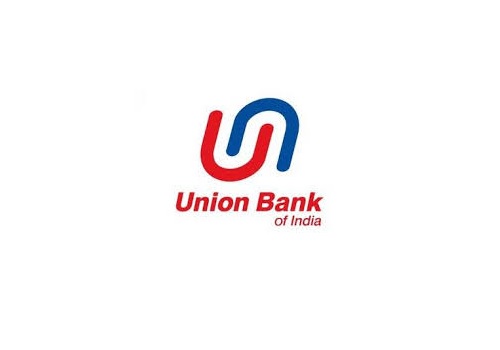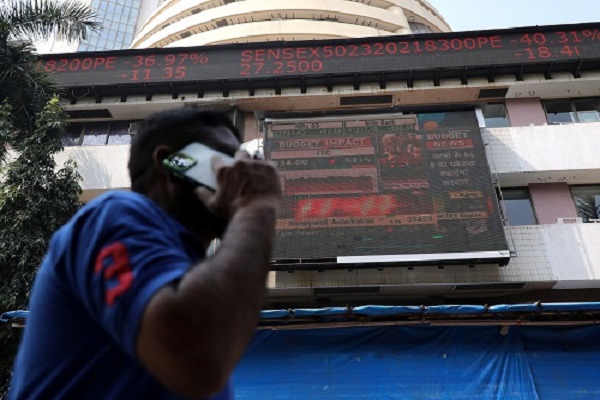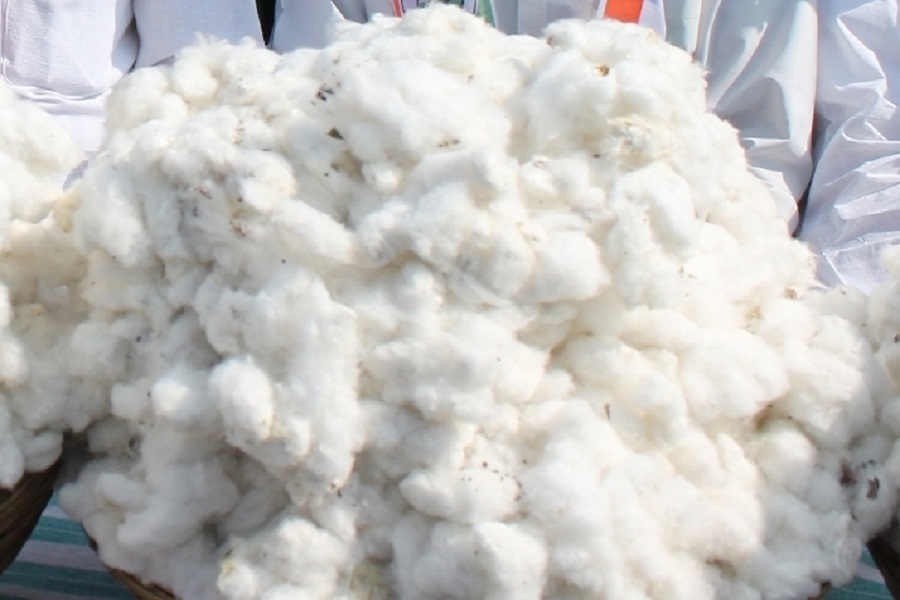Jeera trading range for the day is 20770-21510 - Kedia Advisory

Gold
Gold settled 0.09% higher at Rs.82,304, reaching an all-time high as investors turned to the safe-haven asset following renewed tariff threats from former U.S. President Donald Trump. Trump reiterated plans to impose a 25% duty on imports from Mexico and Canada while considering further tariffs on Chinese goods. Meanwhile, Fed Chair Jerome Powell stated that inflation and job data would determine the timing of any rate cuts. The U.S. economy slowed in Q4, but consumer spending surged to its fastest pace in nearly two years, offering mixed signals for future Fed policy. Despite record prices, India's gold demand remained weak, with domestic traders offering a $35 discount per ounce, slightly lower than the previous week’s $38 discount. Asian trading was muted due to the Lunar New Year holiday, and Swiss gold exports to China dropped 74% in December. However, central banks remained strong buyers, with Poland increasing its reserves by 21 tonnes, and the Reserve Bank of India adding another 8 tonnes, bringing its 2024 net purchase to 73 tonnes. China’s central bank also expanded its gold reserves for the second consecutive month, reflecting strong official demand. Technically, gold remains in a fresh buying phase, with open interest rising 2.55% to 16,269 contracts, signaling strong bullish sentiment. The next support level is at Rs.81,510, with a further decline possibly testing Rs.80,715. On the upside, resistance is at Rs.83,230, and a breakout could push prices toward Rs.84,155.
Trading Ideas:
* Gold trading range for the day is 80715-84155.
* Gold prices scaled an all-time high after U.S. president Donald trump reiterated his tariff threats.
* US President Trump implemented a 25% Tariff on Imports from Mexico and Canada (10% on Canadian Energy), and a 10% additional Tariff on China.
* Fed Chair Jerome Powell said inflation and jobs data would determine when easing would be appropriate.
Silver
Silver settled 0.12% lower at Rs.93,214 as market sentiment weakened after former U.S. President Donald Trump reiterated plans to impose a 25% tariff on Mexico and Canada. The announcement strengthened the U.S. dollar, with the dollar index rising above 108.3, reducing silver’s appeal. However, safe-haven demand remained supported as the Silver Institute projected a market deficit for the fifth consecutive year in 2025, driven by strong industrial use in solar panels, electric vehicles, and electronics. While global silver supply is expected to increase by 3% in 2025 to 1.05 billion ounces, a 149 Moz deficit will persist. Mine production is projected to reach a seven-year high of 844 Moz, with additional output from China, Canada, and Chile. Meanwhile, silver recycling is forecast to rise by 5%, surpassing 200 Moz for the first time since 2012. Industrial fabrication is expected to grow by 3%, exceeding 700 Moz for the first time, reinforcing silver’s structural demand in the green economy. Physical investment is also projected to rise by 3%, particularly in Europe and North America, although jewelry demand is expected to decline by 6%, with India leading the drop due to high domestic prices. Technically, silver remains under fresh selling pressure, with open interest rising 1.86% to 22,820 contracts, signaling increased bearish sentiment. Support is seen at Rs.92,370, with further downside potential toward Rs.91,520. On the upside, resistance is at Rs.94,235, and a breakout could push prices toward Rs.95,250.
Trading Ideas:
* Silver trading range for the day is 91520-95250.
* Silver settled flat as US President Trump reiterated his threat to impose a 25% tariff on Mexico and Canada.
* The Silver Institute also projected a fifth consecutive year of significant market deficit for the metal in 2025.
* Global silver supply is expected to rise this year, with increased output from China, Canada, and Chile
Crude Oil
Crude oil prices rose 1.13% to Rs.6,350 as OPEC+ remained firm on its gradual output strategy, despite calls from former U.S. President Donald Trump to lower prices. Meanwhile, the U.S. Energy Information Administration (EIA) reported that U.S. crude production fell by 122,000 bpd in November to 13.314 million bpd, down from October’s record of 13.436 million bpd. Crude demand, measured by EIA’s product supplied metric, dropped to 20.235 million bpd, the lowest since April 2024. U.S. crude inventories saw their first increase in ten weeks, rising 3.463 million barrels, exceeding the 3.2 million-barrel forecast. Stocks at Cushing, Oklahoma, also increased by 0.326 million barrels. Gasoline inventories rose by 2.957 million barrels, while distillate stocks fell by 4.994 million barrels, significantly more than the expected 2.1 million-barrel drop. Additionally, net U.S. crude imports increased by 0.532 million bpd, adding supply pressure. The EIA revised its 2024 U.S. production estimate upward to 13.55 million bpd, with the Permian Basin continuing to expand output. Global oil production is projected to reach 104.4 million bpd in 2025, slightly higher than the previous estimate of 104.2 million bpd, while demand is expected to average 104.1 million bpd, slightly lower than prior forecasts. Technically, crude oil is experiencing short covering, as open interest dropped 6.81% to 6,495 contracts. Support is at Rs.6,304, with further downside potential to Rs.6,258. Resistance is seen at Rs.6,388, and a breakout could push prices toward Rs.6,426.
Trading Ideas:
* Crudeoil trading range for the day is 6258-6426.
* Crude oil gains as OPEC+ is unlikely to alter plans to raise output gradually.
* US oil production falls in November from record high in October, EIA says
* The U.S. oil rig count, rose by seven to 479 this week.
Natural Gas
Natural gas prices rose 0.68% to Rs.267.3, driven by forecasts of cooler weather in mid-February, which could boost heating demand. This gain came despite milder near-term forecasts and lower demand expectations next week. The market is also reacting to the anticipated massive storage withdrawal, following the extreme cold spell in the U.S. last week. The U.S. rig count for natural gas fell by one to 98, as per Baker Hughes data. Meanwhile, LSEG projected total gas demand in the Lower 48 states to drop from 136.4 bcfd this week to 123.8 bcfd next week, before rebounding to 132.8 bcfd in two weeks. The extreme cold had pushed daily gas use to record highs of 181.2 bcfd on Jan. 21, surpassing the previous record of 168.4 bcfd set in January 2024. The U.S. Energy Information Administration (EIA) reported a 321 bcf withdrawal from storage, higher than market expectations of 313 bcf, reducing inventories to 2,571 bcf. Storage levels are now 5.3% below last year’s levels and 4.1% under the five-year average. EIA forecasts show U.S. dry gas production rising to 104.5 bcfd in 2025 and 107.2 bcfd in 2026, while domestic consumption is expected to increase slightly to 90.6 bcfd in 2025 before declining to 90.4 bcfd in 2026. Technically, fresh buying interest is evident, with open interest rising by 0.14% to 18,297 contracts. Support is at Rs.264.4, with a potential decline to Rs.261.6. On the upside, resistance is at Rs.269.7, and a breakout could lead prices to Rs.272.2.
Trading Ideas:
* Naturalgas trading range for the day is 261.6-272.2.
* Natural gas gained on forecasts calling for cooler weather in mid February that should boost heating demand.
* EIA said utilities pulled 321 billion cubic feet (bcf) of gas out of storage during the week ended Jan. 24.
* The number of rigs drilling for natural gas in the United States fell by 1 this week to 98.
Copper
Copper prices slipped by 0.1% to Rs.828, pressured by concerns over U.S. tariff policies and weak Chinese manufacturing data. Former U.S. President Donald Trump reaffirmed plans for a 25% tariff on Mexico and Canada, with a 10% tariff on China still under consideration. Additionally, potential tariffs on imported steel, aluminum, and copper further weighed on sentiment. In China, the world’s largest copper consumer, manufacturing activity unexpectedly contracted in January, raising concerns about demand. However, China's unwrought copper imports surged 17.8% year-on-year in December, reaching a 13-month high of 559,000 metric tons, indicating refiners were refilling inventories amid higher orders. On the supply side, Freeport-McMoRan reported that it missed its Q4 production targets and expects a significant decline in Q1 output. Meanwhile, Chile revised its long-term copper production forecast to 5.54 million tons by 2034, down from an earlier projection of 6.34 million tons. The global refined copper market showed a 131,000 metric ton deficit in November, widening from a 30,000 metric ton deficit in October, according to the International Copper Study Group (ICSG). However, for the first 11 months of 2023, the market remained in a 168,000 metric ton surplus, compared to a 89,000 metric ton deficit a year earlier. Technically, copper is under long liquidation, with open interest dropping by 0.7% to 6,206 contracts. Support is at Rs.826.5, with a potential decline to Rs.825. On the upside, resistance is at Rs.830.2, and a breakout could push prices toward Rs.832.4.
Trading Ideas:
* Copper trading range for the day is 825-832.4.
* Copper prices ended with losses driven by concerns over US President Donald Trump’s tariff threats.
* Trump reaffirmed plans to impose 25% tariffs on Mexico and Canada, while a 10% tariff on China is still under consideration.
* Data showed that Chinese manufacturing activity unexpectedly contracted in January.
Zinc
Zinc prices fell by 0.3% to Rs.262.35, largely driven by the proposed reduction in customs duty on zinc scrap and waste from 5% to nil in the 2025-26 Budget. This news weighed on the market sentiment, although the downside was limited due to supply concerns. Global zinc production fell for the third consecutive year in 2024, with a 7% drop in refined zinc production from China. The decline was attributed to lower processing rates, leading China’s largest operators to ease output. Additionally, output from the Red Dog Mine in Alaska, the world’s largest zinc mine, is expected to slow in 2025, further tightening supply. Despite the budgetary concerns, zinc’s downside was limited by inventory declines in LME-registered warehouses, where stocks fell to their lowest level since February 2024. Furthermore, the latest data from China revealed an unexpected contraction in the manufacturing sector in January, despite early optimism that improved credit demand would boost growth in goods production. The global zinc market showed a deficit of 52,900 metric tons in November, reducing from a deficit of 65,400 tons in October, as per ILZSG data. However, there was a global zinc deficit of 33,000 tons for the first 11 months of 2024, compared to a surplus of 312,000 tons in the same period of 2023. Technically, zinc is under long liquidation, with open interest down by 3.65% to 3,852 contracts. Support is at Rs.257.6, and a further decline could test the Rs.252.9 level. Resistance is at Rs.265.7, with a move above this level potentially pushing prices toward Rs.269.1.
Trading Ideas:
* Zinc trading range for the day is 252.9-269.1.
* Zinc prices dropped after reduction in customs duty on zinc scrap and waste from 5% to nil.
* However downside seen limited as global mined production declines for third consecutive year
* LME zinc total stocks were at the lowest since February 2024.
Aluminium
Aluminium prices dropped by 0.3% to Rs.249.95, driven by ongoing concerns about U.S. tariffs on imports from Canada and Mexico, with President Donald Trump reiterating his threat of 25% tariffs. This heightened uncertainty overshadowed market sentiment, alongside broader concerns regarding global economic growth. The U.S. inflation data, which is expected to offer clues on interest rate outlooks, added to the pressure. The U.S. Federal Reserve decided to hold rates steady, signaling a cautious approach to rate cuts until inflation and employment data warrant further adjustments. Meanwhile, markets in China, the world’s largest metals consumer, are closed for the Lunar New Year holiday until February 5, adding to reduced market activity. In terms of supply, global primary aluminium production increased by 3% year-on-year to 6.236 million tonnes in December, as per IAI data. Aluminium stocks at three major Japanese ports also saw a 13.2% rise, reaching 323,600 metric tons by the end of December. In China, 2024 aluminium production reached a record 44 million tons, though output will be capped to avoid excess supply. China's aluminium exports grew by 17%, totaling nearly 5.5 million tons in the first 10 months of the year. Technically, aluminium prices are under long liquidation, with a drop in open interest by 1.39% to 3,700 contracts. Support is at Rs.248.9, and a decline below this level could test Rs.247.7. Resistance is at Rs.251.4, and a move above this could lead to a test of Rs.252.7.
Trading Ideas:
* Aluminium trading range for the day is 247.7-252.7.
* Aluminium fell as global markets braced for the threat of U.S. tariffs on Canada and Mexico.
* Prices were also affected by recent concern over global economic growth.
* The main markets in China are closed for the Lunar New Year holiday until Feb. 5.
Cotton Candy
Cotton candy settled up by 0.02% at Rs.53,600, supported by global supply concerns and revised projections for cotton production. Brazil's 2024-25 cotton production forecast was reduced to 3.79 million tonnes, down from 3.83 million tonnes in December, mainly due to a reduction in planted acreage in Mato Grosso, the country’s top cotton-producing region. Meanwhile, the Cotton Association of India (CAI) revised its 2024-25 crop projections upwards by 2 lakh bales to 304.25 lakh bales. This increase is largely due to better-than-expected output in Telangana, which saw an upward revision of 6 lakh bales. The WASDE report also projected higher global cotton production for the 2024/25 crop year, estimating a rise to 117.4 million bales, mainly driven by increased production in India and Argentina. However, a 43% decline in kapas arrivals in North India till November 30, 2024, coupled with supply shortages and concerns about holding back produce for better prices, has put pressure on the supply chain. Despite these concerns, the downside for cotton prices remains limited, supported by the increase in cotton yarn prices in South India, driven by strong demand from garment industries and strong export orders. Technically, the market is witnessing fresh buying, as open interest has increased by 1.95% to 261 contracts, with prices up by Rs.10. Support is seen at Rs.53,510, and a drop below this could test Rs.53,430. Resistance is at Rs.53,660, and a move above this could push prices towards Rs.53,730.
Trading Ideas:
* Cottoncandy trading range for the day is 53430-53730.
* Cotton gains as Brazil's 2024-25 cotton production forecast was revised down to 3.79 million tonnes
* CAI has revised upwards its crop projections by 2 lakh bales from its earlier estimates
* Global cotton production is projected to rise by more than 1.2 million bales to 117.4 million bales.
* In Rajkot, a major spot market, the price ended at 25251.25 Rupees dropped by -0.3 percent.
Turmeric
Turmeric prices settled down by 0.55% at Rs.13,274, as weak demand and a significant improvement in arrivals pressured the market. With the harvesting season in full swing, arrivals surged to 13,190 bags, up from 6,780 bags in the previous session, with Nizamabad and Hingoli seeing the highest arrivals. As the new crop continues to arrive, expectations of higher supplies have created downward pressure on prices. Despite the rise in arrivals, the downside in turmeric prices remains limited, as new crop yields are expected to be 10-15% lower this year, particularly due to small rhizomes and crop rots observed in the Nanded region. Confirmation of these concerns will be more apparent once harvesting intensifies in the key producing areas. Additionally, slow rhizome growth and low yield estimates have added support, as farmers are already anticipating a reduction in output. On the export front, turmeric exports saw a jump of 9.8% to 121,601.21 tonnes from Apr-Nov 2024, compared to 110,745.34 tonnes in the same period last year. However, there was a 20.18% drop in exports in Nov 2024 compared to October, indicating some slowing demand. Import volumes surged by 101.8% during the same period, which may impact local supply and demand dynamics. Technically, the market is seeing fresh selling, with open interest rising by 0.25% to 11,945 contracts, and prices down by Rs.74. Support is expected at Rs.13,196, with a potential test of Rs.13,120. Resistance is at Rs.13,398, and a breakout above this level could push prices to Rs.13,524.
Trading Ideas:
* Turmeric trading range for the day is 13120-13524.
* Turmeric dropped on weak demand and marginal improvement in arrivals.
* As new crop continues to arrive, arrivals are expected to remain high.
* With the arrival of new crop likely to increase after Makar Sankranti, supply is expected to increase.
* In Nizamabad, a major spot market, the price ended at 13335.7 Rupees dropped by -1.9 percent.
Jeera
Jeera prices settled down by 0.8% at Rs.21,100, as demand remained weak and the current export business is being met from available stocks. Farmers are reported to still have about 20 lakh bags of cumin, but only 3-4 lakh bags are expected to be traded by the end of the season, leading to a carry-forward stock of around 16 lakh bags. This has put pressure on prices, though the downside remains limited due to stock shortages. India's cumin seed production has increased to 8.6 lakh tonnes from an area of 11.87 lakh ha during the 2023-24 season, compared to 5.77 lakh tonnes from 9.37 lakh ha in the previous year. The Spices Board highlights the better crop conditions and good sowing, supporting stable production levels. India's cumin remains the cheapest globally, with prices quoted at $3,050 per tonne, which is significantly lower than Chinese cumin, priced $200-$250 higher. This price advantage is expected to attract global buyers, particularly from China, Europe, and other regions, further supporting the cumin market. Jeera exports saw a 74.04% rise during Apr-Nov 2024 at 147,006.20 tonnes compared to the previous year. However, November exports saw a 28.92% drop from October, suggesting some seasonal slowdown. Tensions in the Middle East have also fueled export demand, particularly from Gujarat. Technically, the market is under long liquidation, with open interest falling by 1.76% to 2,505 contracts and a price drop of Rs.170. Support is seen at Rs.20,940, with potential for a test of Rs.20,770. Resistance is at Rs.21,310, and a breakout above this could push prices to Rs.21,510.
Trading Ideas:
* Jeera trading range for the day is 20770-21510.
* Jeera dropped as demand is low and the current export business is being met from the available stock.
* However downside seen limited amid shortage of stocks.
* The current season is expected to have similar production levels as last year due to better crop conditions and good sowing.
* In Unjha, a major spot market, the price ended at 22002.45 Rupees dropped by -0.41 percent.
Views express by all participants are for information & academic purpose only. Kindly read disclaimer before referring below views























